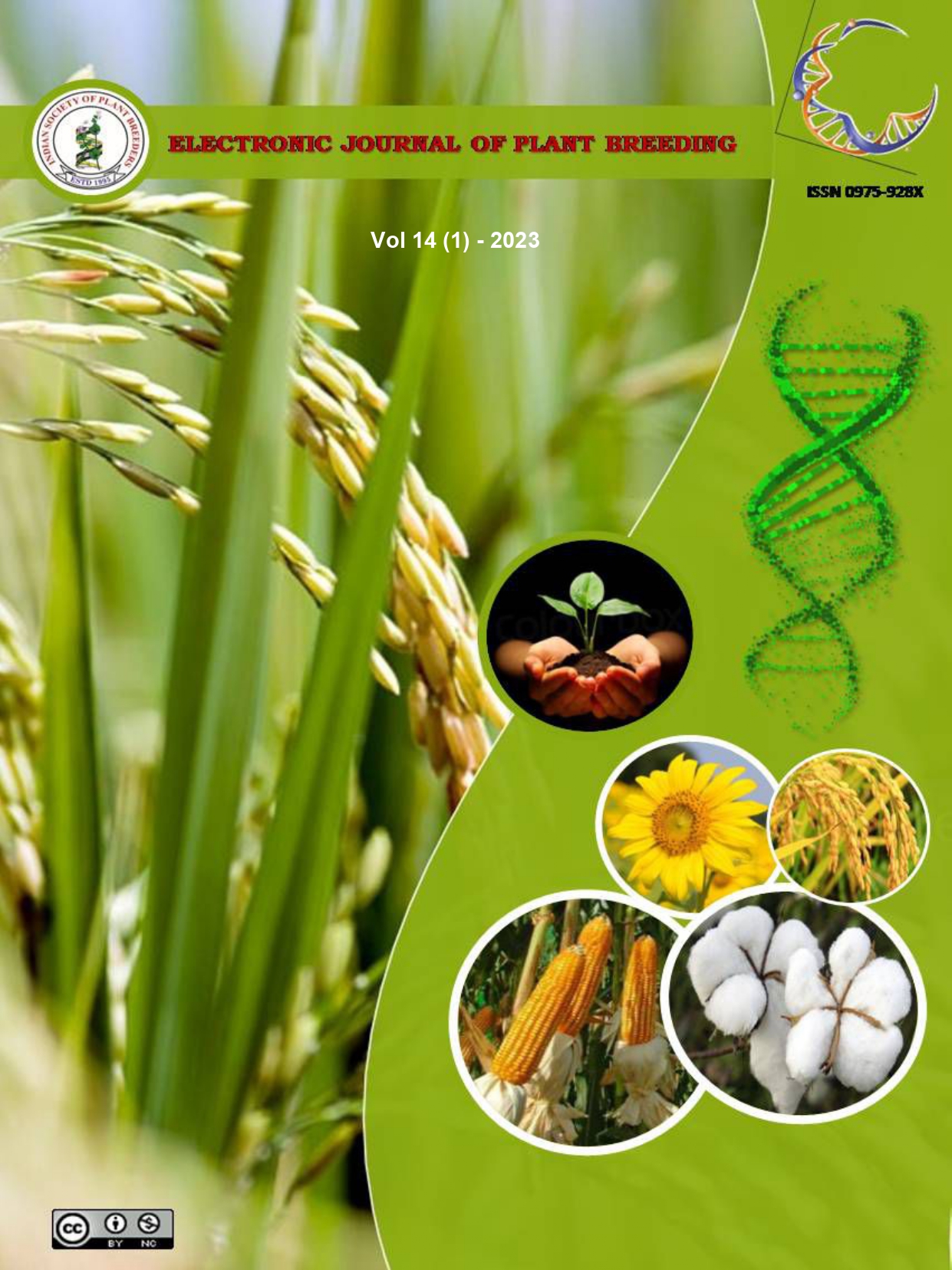Comparison of variability in early segregating generations of Indian Mustard [Brassica juncea (L.) Czern & Coss.] crosses
Abstract
Eight parents and the 28 crosses of Indian Mustard (Brassica juncea (L.) Czern & Coss.) in two segregating generations, viz., F2 and F3 were studied for their genetic variability during the rabi seasons of 2020-21 and 2021-22, respectively. Observations were recorded for six morphological characters such as plant height (cm), primary branches per plant, secondary branches per plant, siliquae per plant, 1000 seed weight (g) and seed yield per plant (g). The PCV was found to be greater than the GCV and the difference between them was high in all the characters in both F2 and F3 generations. Most of the characters revealed a medium range of GCV and PCV. Moderate heritability was expressed by all the characters except primary branches per plant in F3 generation. The Genetic Advance as a percentage of Mean (GAM) was higher in most characters except in plant height. The character plant height was found to be positively correlated with seed yield per plant in both F2 and F3 generations, with secondary branches per plant in the F3 generation and negatively correlated with primary branches per plant in F3 generation. A high direct effect on seed yield per plant was exhibited by plant height and 1000 seed weight in both F2 and F3 generations and by Secondary branches per plant in the F2 generation and Siliquae per plant in the F3 generation.

